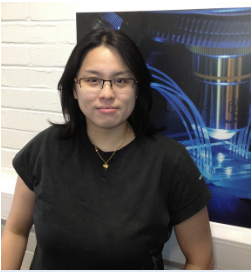Microfluidics for Biodetection and Sensing
A special issue of Micromachines (ISSN 2072-666X). This special issue belongs to the section "E:Engineering and Technology".
Deadline for manuscript submissions: closed (15 November 2021) | Viewed by 4901
Special Issue Editors
Interests: microfluidics; biosensors; optical sensors; chemical sensors
Special Issues, Collections and Topics in MDPI journals
Special Issue Information
Dear Colleagues,
Biodetection and sensing are increasingly pertinent subjects in today’s climate—both for public health as well as the health of our environment—and the widely known benefits of using microfluidics could facilitate better, faster, and safer detection and monitoring of potential biothreats and chemicals around us.
Microfluidics is a multidisciplinary technology that interconnects several different areas of science, including chemistry, engineering, physics, and biology, and enables an increasing number of applications. Advances in liquid handling using micro- and nano-sized volumes allow for the automation of cumbersome and time-consuming laboratory unit operations (LUOs) such as purification, extraction, washing and separation, aliquoting, and incubation of samples prior to detection. Key advantages associated with microfluidics-based platforms with integrated detection and sensing include (i) the reduced consumption of reagents, (ii) the ability for rapid biodetection/sensing because of tiny volumes, (iii) the process intensification due to large surface-to-volume ratio, (iv) the high level of integration enabling portability and multi-functionality for point-of-need testing and monitoring.
There have been significant advances in both biosensor technology and in microfluidics, but a successful integration between these two somewhat disparate fields is key. Therefore, this Special Issue seeks to showcase research papers, and review articles that focus on the intersection of microfluidics and biodetection/sensing technologies, with particular interest being paid to detection and sensing technologies that are favorable for integration into microfluidics devices. Novel contributions that demonstrate clever approaches in any of the above listed research areas with integration in sight are also welcome.
Dr. Christabel Tan
Dr. Nikolay Dimov
Guest Editors
Manuscript Submission Information
Manuscripts should be submitted online at www.mdpi.com by registering and logging in to this website. Once you are registered, click here to go to the submission form. Manuscripts can be submitted until the deadline. All submissions that pass pre-check are peer-reviewed. Accepted papers will be published continuously in the journal (as soon as accepted) and will be listed together on the special issue website. Research articles, review articles as well as short communications are invited. For planned papers, a title and short abstract (about 100 words) can be sent to the Editorial Office for announcement on this website.
Submitted manuscripts should not have been published previously, nor be under consideration for publication elsewhere (except conference proceedings papers). All manuscripts are thoroughly refereed through a single-blind peer-review process. A guide for authors and other relevant information for submission of manuscripts is available on the Instructions for Authors page. Micromachines is an international peer-reviewed open access monthly journal published by MDPI.
Please visit the Instructions for Authors page before submitting a manuscript. The Article Processing Charge (APC) for publication in this open access journal is 2600 CHF (Swiss Francs). Submitted papers should be well formatted and use good English. Authors may use MDPI's English editing service prior to publication or during author revisions.
Keywords
- Biodetection
- Sensors
- Electronics
- Point-of-Care
- Environmental monitoring
- Microfluidics
- MEMS
- Miniaturisation
- Automated detection systems
Related Special Issue
- Biosensors for Pathogen Detection in Micromachines (9 articles)







